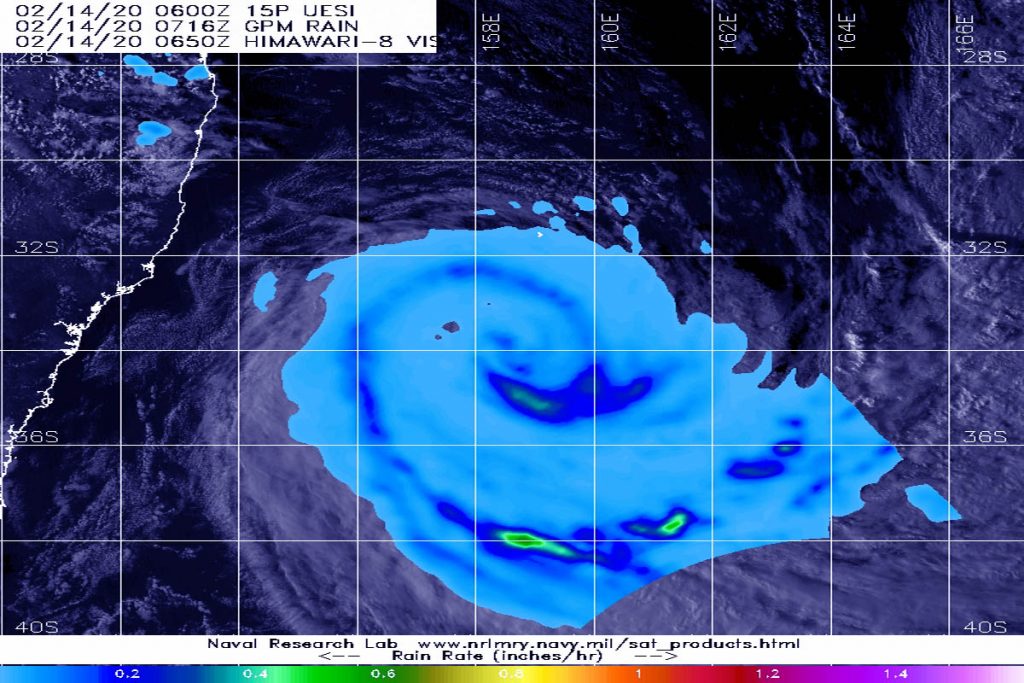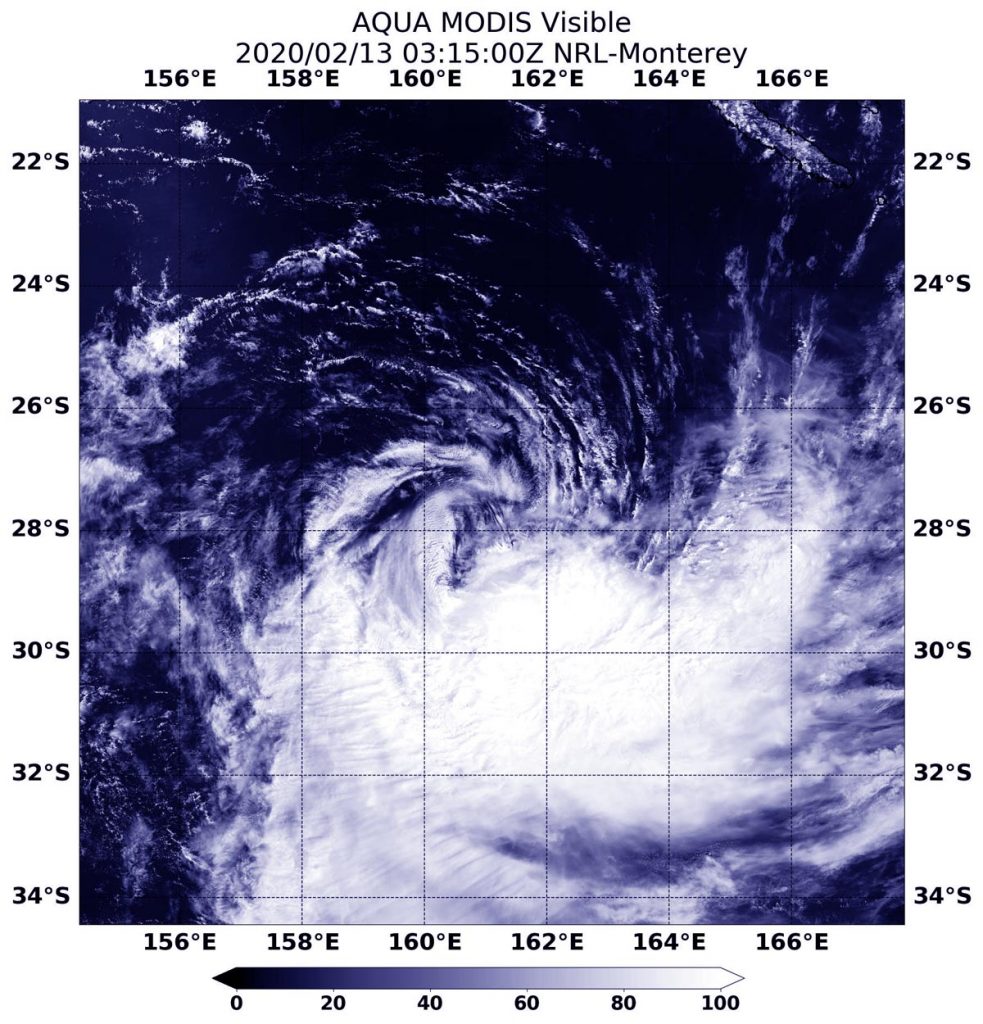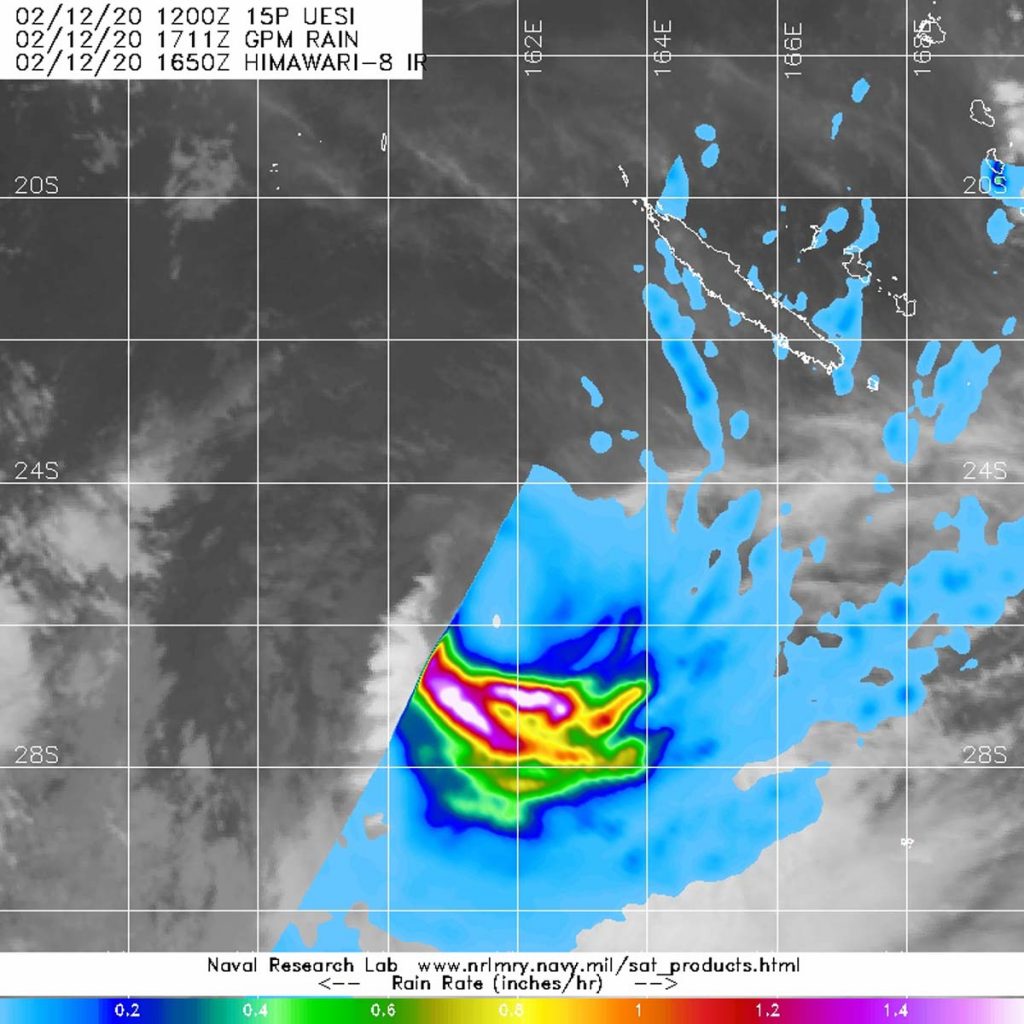Feb. 14, 2020 – NASA Finds Ex-Tropical Cyclone Uesi’s Rains Affecting New Zealand
Although it is now an “ex-tropical cyclone,” Uesi continues to generate some moderate rainfall, especially in its southern quadrant as it moves toward New Zealand.

The Global Precipitation Measurement mission or GPM satellite provided a look at the rainfall rates on Feb. 14 at 2:11 a.m. EST (0716 UTC). GPM found heaviest rainfall south of center and in bands far south of the center falling at rates of 1 inch (25 mm) per hour. Light rain appears around the entire system, falling at less than 0.2 inches (less than 5 millimeters) per hour.
On Feb. 13 at 2218 UTC (5:18 p.m. EST), the New Zealand Met Service (NZMS) reported “Ex-Tropical Cyclone Uesi was located near Lord Howe Island this morning, and is moving southwest. The system is expected to gradually recurve towards the southeast and move close to the lower South Island during Sunday [Feb.16].”
On Feb. 14, NZMS noted a Heavy Rain Warning is currently in effect for Westland south of Otira. A Heavy Rain Watch is in effect for the remainder of the South Island West Coast and Stewart Island.
NZMS said “A heavy rain warning is in effect for the South Island West Coast and Stewart Island on Sunday [Feb.16] and early Monday [Feb. 17]. Former Tropical Cyclone Uesi is forecast to approach the South Island from the north Tasman Sea overnight Saturday and lie to the west of Fiordland on Sunday. It should then move southwest from late Sunday onwards and weaken. This system is expected to bring periods of heavy rain to the west and south of the South Island during Sunday and early Monday. Strong to gale north to northwest winds are also expected in parts of the South Island and the lower North Island during this time.”
Tropical cyclones/hurricanes are the most powerful weather events on Earth. NASA’s expertise in space and scientific exploration contributes to essential services provided to the American people by other federal agencies, such as hurricane weather forecasting.
GPM is a joint mission between NASA and the Japan Aerospace Exploration Agency, JAXA.




